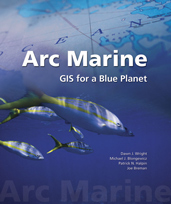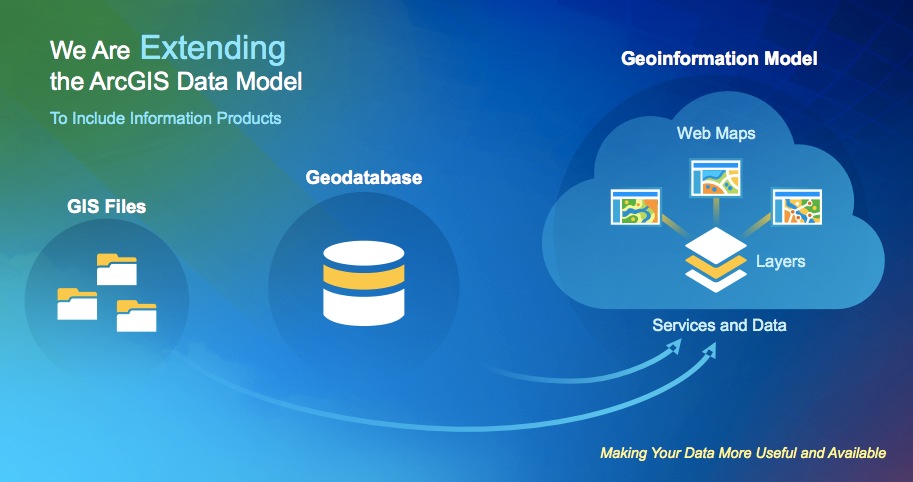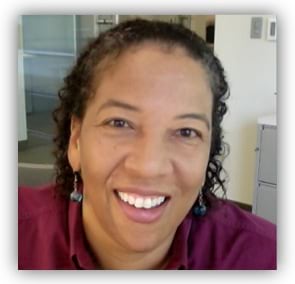As mentioned in a prior blog post, there have been discussions about the development of a new, improved version of the 2007 Arc Marine Data Model (also known as the “Marine Data Model”). This was an action item following on from the 2012 Esri Oceans Summit, where great interest was shown in updating, and thus improving the model.
An important takeaway from the 2014 Esri User Conference is that Esri continues to quickly move forward into the web-based services world, in terms of both data and geoprocessing services. This is what we are calling a new Geoinformation Model that is based on these services as an extension to the desktop geodatabase models of old. During the 80s and 90s, the ArcGIS data model was file-oriented with coverages, and later shapefiles. In the late 90s, we began putting geographic data into relational databases so that we could use that platform to do multiuser access to the data. What we’re doing now is moving into the web with a services model, extending the model with layers and web maps that travel with the data. And here the emphasis is very much on web maps via ArcGIS Online, which make your datasets even more accessible because you can work with them just about anywhere, at any time. These web maps still point back to the core databases behind the scenes. This environment, this architecture, and this extension of the data model are part of the reason why web maps and web-based geoprocessing are taking off in so many new ways. At the same time, we are also following and looking to support OGC’s emerging GeoPackage Encoding Standard.
As we increasingly focus on this new Geoinformation Model, while also considering our current resources and available staffing, we at Esri feel that the work of Dr. Celso Ferreira at George Mason University is actually making the most progress in advancing Arc Marine under the old geodatabase framework. For example, his lab has already developed its own geodatamodel and ArcGIS tools based on both Arc Marine and Arc Hydro for coastal flooding applications. We would thus like to point the community to Dr. Ferreira as a lead on Arc Marine, and we look forward to promoting and assisting his work where we can.



Commenting is not enabled for this article.